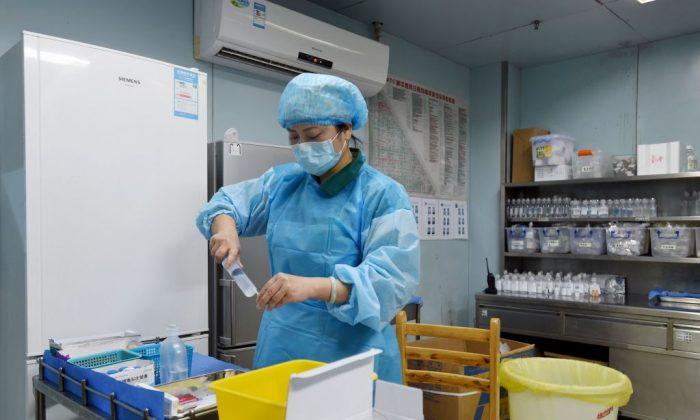A man in eastern China has contracted what appears to be the first human case of H10N3, a type of avian influenza, according to Chinese regime officials.
The 41-year-old man, who wasn’t identified, was hospitalized in late April with H10N3 in Zhenjiang, Jiangsu Province, located near Shanghai, according to China’s National Health Commission in a statement on its website.
The commission stated that no other cases have been reported.
“This infection is an accidental cross-species transmission,” its statement said, while also claiming that “the risk of large-scale transmission is low,” according to a Chinese-to-English translation.
The agency stated that the man developed a fever and other symptoms; he was diagnosed with H10N3 about a month later, on May 28.
Filip Claes, the regional laboratory coordinator of the Food and Agriculture Organization, told the
Reuters news agency that this strain of bird flu is “not a very common virus.”
Over the years, several strains of bird flu have been found among animals in China, although reports of mass outbreaks among humans are rare.
The last human epidemic involving a bird flu strain, H7N9, occurred in China in 2016 and 2017. H7N9, which has a relatively high mortality rate, has infected some 1,700 people and killed 613 since 2013, according to the United Nations’ Food and Agriculture Organization.
Last year, Chinese health officials reported outbreaks of H5N1 bird flu,
including one that forced the culling of 18,000 chickens in Hunan Province.
The reports of H10N3 being contracted in China come as the Chinese Communist Party (CCP) has faced increasing scrutiny from U.S. officials about the origins of the
CCP virus, otherwise known as the coronavirus that causes COVID-19, and whether it leaked or was researched at a lab in Wuhan. CCP officials have long said that the virus was transmitted from an animal to humans at a Wuhan wet market, but the regime has provided no evidence for the claim and hasn’t identified the animal in question.
Late last month, President Joe Biden released a statement saying that many within the 17-agency U.S. intelligence community believe that the
virus came from the Wuhan Institute of Virology, a top-security lab, and called on them to release a report within the coming months on the origin of the CCP virus.
Before that, throughout 2020, corporate media outlets and fact-checking websites attempted to
downplay assertions that the virus might have come from the lab, sometimes describing the claims as part of a “conspiracy theory.”
But over the weekend, top journalists including ABC News’ Jonathan Karl conceded that the Wuhan lab leak theory is plausible and said it wasn’t taken seriously simply because President Donald Trump and administration officials often made those claims.
“Yes, I think a lot of people have egg on their face,”
Karl said. “This was an idea that was first put forward by Mike Pompeo, secretary of state, Donald Trump, and look, some things may be true even if Donald Trump said them. Because Trump was saying so much else that was just out of control … he said flatly this came from that lab, and it was widely dismissed … but now serious people are saying it needs a serious inquiry.”
Officials at the U.S. Centers for Disease Control and Prevention didn’t immediately respond to requests by The Epoch Times for comment.






Friends Read Free